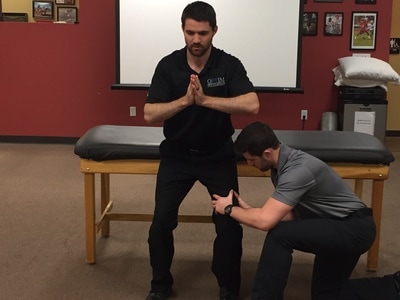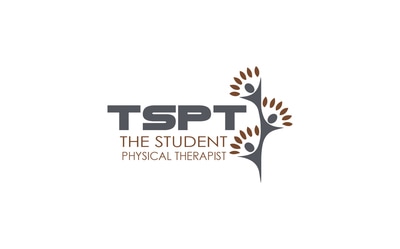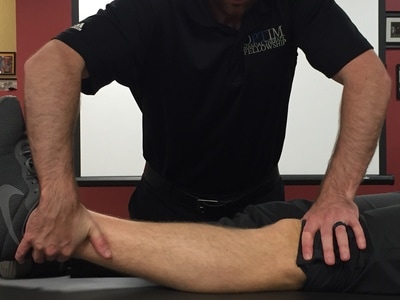- Home
- About Us
- TSPT Academy
- Online Courses
-
Resources
- Newsletter
- Business Minded Sports Physio Podcast
- Day in the Life of a Sports PT
- Residency Corner
-
Special Tests
>
-
Cervical Spine
>
- Alar Ligament Test
- Bakody's Sign
- Cervical Distraction Test
- Cervical Rotation Lateral Flexion Test
- Craniocervical Flexion Test (CCFT)
- Deep Neck Flexor Endurance Test
- Posterior-Anterior Segmental Mobility
- Segmental Mobility
- Sharp-Purser Test
- Spurling's Maneuver
- Transverse Ligament Test
- ULNT - Median
- ULNT - Radial
- ULNT - Ulnar
- Vertebral Artery Test
- Thoracic Spine >
-
Lumbar Spine/Sacroiliac Joint
>
- Active Sit-Up Test
- Alternate Gillet Test
- Crossed Straight Leg Raise Test
- Extensor Endurance Test
- FABER Test
- Fortin's Sign
- Gaenslen Test
- Gillet Test
- Gower's Sign
- Lumbar Quadrant Test
- POSH Test
- Posteroanterior Mobility
- Prone Knee Bend Test
- Prone Instability Test
- Resisted Abduction Test
- Sacral Clearing Test
- Seated Forward Flexion Test
- SIJ Compression/Distraction Test
- Slump Test
- Sphinx Test
- Spine Rotators & Multifidus Test
- Squish Test
- Standing Forward Flexion Test
- Straight Leg Raise Test
- Supine to Long Sit Test
-
Shoulder
>
- Active Compression Test
- Anterior Apprehension
- Biceps Load Test II
- Drop Arm Sign
- External Rotation Lag Sign
- Hawkins-Kennedy Impingement Sign
- Horizontal Adduction Test
- Internal Rotation Lag Sign
- Jobe Test
- Ludington's Test
- Neer Test
- Painful Arc Sign
- Pronated Load Test
- Resisted Supination External Rotation Test
- Speed's Test
- Posterior Apprehension
- Sulcus Sign
- Thoracic Outlet Tests >
- Yergason's Test
- Elbow >
- Wrist/Hand >
- Hip >
- Knee >
- Foot/Ankle >
-
Cervical Spine
>
- I want Financial Freedom
- I want Professional Growth
- I want Clinical Mastery
Ligamentous injuries are often a common sports injury. Learning how to return your athletes back to their sport with objective testing is crucial. See this complimentary Insider Access return to sport testing video to learn how to get your athletes back to the game. |
|
Varus Stress Test
Purpose: To assess the integrity of the LCL.
Test Position: Supine.
Performing the Test: The patient's leg should be relaxed for this test. The examiner should passively bend the affected leg to about 30 degrees of flexion. While palpating the lateral joint line, the examiner should apply a varus force to the patient's knee. A positive test occurs when pain or excessive gapping occurs (some gapping is normal at 30 degrees). Be sure to not include rotation of the hip in your application of force. Next the examiner should repeat the test with the knee in neutral (0 degrees of flexion). A positive test occurs when pain or gapping is produced. There should be no gapping at 0 degrees.
Diagnostic Accuracy: Sensitivity: .25 ("Evaluation of knee instability in acute ligamentous injuries").
Importance of Test: The lateral collateral ligament is important for resisting varus force at the knee due to its attachments along the femur and fibular head. With the fibular nerve also located around the fibular head, any injury with a mechanism of a varus force to the knee could potentially stress the fibular nerve as well. Other tissues at risk with these injuries include the PCL and arcuate complex, especially if the injury varus force is combined with extension. At 0 degrees, there is usually no gapping that occurs when a varus stressed is applied, so if gapping occurs during the test, severe injury is suspected i.e. ACL, PCL, LCL, capsule. In the position of 30 degrees, some gapping occurs, because the LCL and other structures are no longer stressed maximally. The LCL is a very thick, fibrous ligament that can be palpated with a position stress in the figure-4 position (just think of the attachments!). Due to the difficulty of varus forces being an injury mechanism (because of the shielding by the opposite lower extremity), isolated LCL injuries are relatively rare.
Note: these tests should only be used by properly trained health care practitioners
Test Position: Supine.
Performing the Test: The patient's leg should be relaxed for this test. The examiner should passively bend the affected leg to about 30 degrees of flexion. While palpating the lateral joint line, the examiner should apply a varus force to the patient's knee. A positive test occurs when pain or excessive gapping occurs (some gapping is normal at 30 degrees). Be sure to not include rotation of the hip in your application of force. Next the examiner should repeat the test with the knee in neutral (0 degrees of flexion). A positive test occurs when pain or gapping is produced. There should be no gapping at 0 degrees.
Diagnostic Accuracy: Sensitivity: .25 ("Evaluation of knee instability in acute ligamentous injuries").
Importance of Test: The lateral collateral ligament is important for resisting varus force at the knee due to its attachments along the femur and fibular head. With the fibular nerve also located around the fibular head, any injury with a mechanism of a varus force to the knee could potentially stress the fibular nerve as well. Other tissues at risk with these injuries include the PCL and arcuate complex, especially if the injury varus force is combined with extension. At 0 degrees, there is usually no gapping that occurs when a varus stressed is applied, so if gapping occurs during the test, severe injury is suspected i.e. ACL, PCL, LCL, capsule. In the position of 30 degrees, some gapping occurs, because the LCL and other structures are no longer stressed maximally. The LCL is a very thick, fibrous ligament that can be palpated with a position stress in the figure-4 position (just think of the attachments!). Due to the difficulty of varus forces being an injury mechanism (because of the shielding by the opposite lower extremity), isolated LCL injuries are relatively rare.
Note: these tests should only be used by properly trained health care practitioners
|
|
|
Reference:
Harilainen A. "Evaluation of knee instability in acute ligamentous injuries." Ann Chir Gynaecol 1987; 76(5):269-273. Web. 09/04/2012.
Harilainen A. "Evaluation of knee instability in acute ligamentous injuries." Ann Chir Gynaecol 1987; 76(5):269-273. Web. 09/04/2012.
Copyright © The Student Physical Therapist LLC 2023



